The Treasures To Be Found In Harz Germany, And Five Other Tips For Travellers
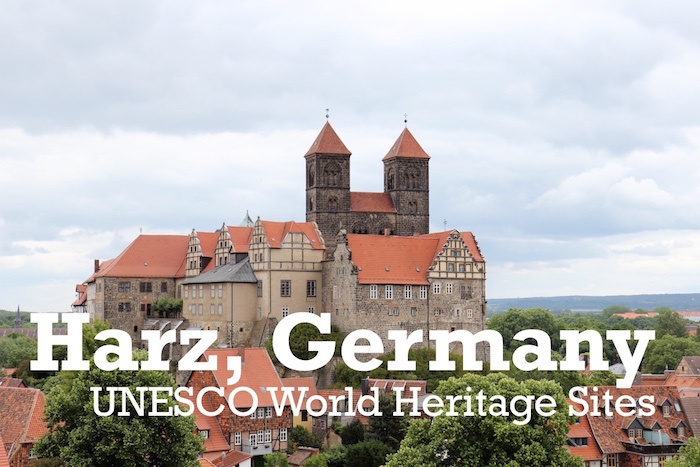 At least 262 days of the year the Brocken, the highest point in the Harz Mountains and all of Northern Germany, has a thick mist engulfing the summit. When I was there the thickness only occasionally opened to fleetingly reveal startling sights – like the vast 123-metre red and white TV tower, the modern glass-sided Brockenhaus museum with a dome on top that used to house the East German Secret Service listening equipment and the sweeping view across thickly clad forests into the valley below. People unexpectedly appeared out of the whiteness in front of me, and I heard the chatter and laughter of teenagers in school parties somewhere around me playing within the mysterious environment.
At least 262 days of the year the Brocken, the highest point in the Harz Mountains and all of Northern Germany, has a thick mist engulfing the summit. When I was there the thickness only occasionally opened to fleetingly reveal startling sights – like the vast 123-metre red and white TV tower, the modern glass-sided Brockenhaus museum with a dome on top that used to house the East German Secret Service listening equipment and the sweeping view across thickly clad forests into the valley below. People unexpectedly appeared out of the whiteness in front of me, and I heard the chatter and laughter of teenagers in school parties somewhere around me playing within the mysterious environment.
Sounds were important, as without them I probably would have felt very unnerved rather than entranced by the quiet thick swirling whiteness around me. My visit made me appreciate why the area has myriads of fables and superstitions around it, such as witches supposedly thriving on the mountain and immortalised by Johann Wolfgang von Goethe’s play “Faust” and why climbers are often being spooked by the “Brocken spectre”, which is when their own oversized shadows loom over them in the mist.
Christoph Lampert, the cheerful director of the Brockenhaus museum, told me that the Russian troops and the Stasi based here during the Cold War on their spying assignment would despair at living and working isolated in thick mist all year round. Perhaps the fear of the eeriness, and what may reside within it, was why they sealed off the top of the Brocken with a 3-meter high 2,318 concrete slab wall around their hilltop settlement. It was not really to keep prying civilians and western agents out. He joked that even gardeners and other people who have to work outside everyday struggle to stay in their jobs for more than a year or two. But for tourists like me, or robust hikers, this is a thrilling place to visit.
Part of the unique experience was my trip up on the Harz Narrow Gauge Railway. The Brocken Line from Drei Annen Hohne station opened in 1899 and, with the exception of the Cold War when only the military could use the train, it has been taking visitors up there ever since. The line still uses puffing old 1950s steam engines.
Watch my video of the Harz Narrow Gauge train and trip up the Brocken
The Brocken may be the highest point in this region, but it is not the only highlight in this historically rich region. Within easy commuting distance is a feast of fascinating UNESCO World Heritage Sites and other ancient places to visit. These include the following:
 Goslar: A well preserved and cared for medieval town.
Goslar: A well preserved and cared for medieval town.
Justifiably a UNESCO World Heritage site, the old town of Goslar is an incredibly well preserved medieval town that has survived the highs and lows of wars, development and time. There are around 1,500 timber-clad houses and buildings across the town, which are beautifully and lovingly cared for.
For me the highlight of the old town was the large Marktplatz (Marketplace), which is surrounded by ancient buildings. These include the town hall, with stained glass windows and a mural-covered hall, and a bronze fountain in the centre with gold bird on top. The square has a lazy and quiet feel except for four times a day when the “Glocken-und Figurenspiel” at the top of the Restaurant Schiefer building comes to life. Suddenly a crowd appears to watch the series of four automated tableaux that tell the story of history of the Rammelsberg mining outside the city from the legend of how the minerals were discovered to modern mining.
Exploring the town is easy as the ancient part is just 1km by 2km. As I strolled around taking in the gorgeous timber-clad buildings with stunning slate roofs, I stumbled across gems like old mill houses next to gentle trickling streams and little museums, including the unusual and fascinating “Historisches Zinnfiguren Museum” (Historical Figurines Museum) which has intricate displays of small pewter figurines in scenes depicting the history of the region.
 Imperial Palace of Goslar: Imposing and impressive.
Imperial Palace of Goslar: Imposing and impressive.
On the outskirts of the old town is the dramatic Imperial Palace of Goslar. An easy walk from the town centre, it stands on top of a steep green hill with a long walkway up towards it. This required me to stare up at the grand building, with its huge statues looming above me, as I made my way towards it. Clearly designed to impress, it is an imposing sight overlooking Goslar. It dates back to the 11th Century and has seen over 13 Kings and Emperors hold court there over the centuries. Now it is a vast and fascinating museum.
 Rammelsberg Mine, Goslar: Explore 1,000 years of mining underground.
Rammelsberg Mine, Goslar: Explore 1,000 years of mining underground.
The first UNESCO World Heritage Site recognised for technology in Germany, the Rammelsberg Mine was given this honour as it encapsulates 1,000 years of mining technology and progress. From ancient water-powered systems, with huge 9-metre water wheels built deep underground in huge caverns chipped by hand out of the stone, to the revolutionary processing system developed in the 1920s to more efficiently extract the silver, copper, lead and zinc from the ore, this is a sprawling and unique experience.
There are a number of escorted tours available to visitors. I recommend the one I did which first takes you up the open-air elevator to the top of the facility to view the scale of the complex before walking down through the old processing plant. I then was taken via the access tunnels to work ever deeper and deeper into the shafts. On the tour I went 150 metres below the entrance level and saw how mining was undertaken in medieval times through to its closure in 1988.
The brave can do an Adventure Tour in the medieval shafts, where you need to be comfortable with darkness and very tight spaces. Rammelsberg also caters for people with waking or mobility issues with special tours including the “Not Over The Hill: Senior Citizen Tour” that avoids the 101 stairs at the end of the regular tour, and the “Mining in the 20th Century: Mine Train” excursion where guests can ride 500 metres into the mine on an original mine train.
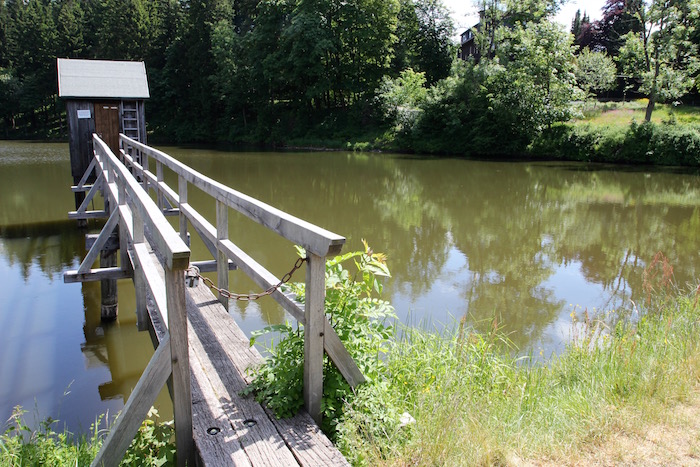 Upper Harz Water Management System: Showing that water can be interesting, clever and pretty at the same time.
Upper Harz Water Management System: Showing that water can be interesting, clever and pretty at the same time.
Learning about a water management system sounds dull, but the Upper Harz one in Germany is not – which is why it was made a UNESCO World Heritage Site. This complex man-made system provided the energy to extract silver, copper and lead from hundred of metres under the hard rock for centuries. A series of lakes, ditches and canals were created to feed water to drive the huge above and under-ground water wheels that took men below ground, emptied the shafts of water to let them work and carried the ore up to the surface to be processed.
Today 107 man-made lakes, 310 km of ditches and 30km of underground canals are still preserved. I recommend going on one of the 2, 4 or 7-hour tours to explore them and hear the stories. The tours can be booked via the Das Oberharzer Bergwerksmuseum in Clausthal-Zellerfeld, which is about half an hour drive from Goslar.
Mr Andreas Ravens, who manages this well-established museum that opened in 1892, showed me around. He has worked here for decades, starting first as a part-time employee while studying at the well-respected local university. His passion and enthusiasm is infectious and he has a myriad of stories to share. First he walked me through the exhibits before escorting me into a remarkable reconstruction of a local mine below the grounds of the museum. A traditional and authentic mine building, complete with waterwheel and scary-looking man lift that required miners to step across small moving platforms to slowly work their way into and up from the mine, was moved to the site in the 1930s and the simulated mine built. Although the mine tunnels you walk through are only ten feet below the ground, you feel you are deep below the earth’s surface. We then headed to the outskirts of the town to explore some of the lakes, ditches and waterways. Fascinating.
 Quedlinburg: 80-hectares of UNESCO World Heritage recognised architecture.
Quedlinburg: 80-hectares of UNESCO World Heritage recognised architecture.
Quedlinburg is a gorgeous town full of well-preserved half-timber clad houses, for which it was made a UNESCO World Heritage Site. The town escaped damage during World War II and was carefully cared for, with many buildings restored, during East German times using Polish experts. Up on the Castle Mount is the stunning church, museum and complex that towers high above the town. From up here you get gorgeous views over the pretty town and surrounding countryside.
If you want to explore it, the history of the church and mount is fascinating and, at times, even bizarre. From its roots and links to the much-loved and respected King of Germany, Henry I, when his widow (Saint Matilda) created a religious community for women to educate the daughters of nobility to being hijacked by the NAZI SS leader Heinrich Himmler before the war as he attempted to built a mythology around himself as a self-professed reincarnation of Henry.
If visiting Quedlinburg I recommend going on an escorted tour, as I did, to ensure you get the most insight and understanding of what you are seeing and experiencing, as there are many details and stories about the buildings across the town. You should book these via the Tourist Office in the beautiful town square. There are two offices there, and the red one is the official one you should use. Next-door is a privately operated office, which is green. If you are seeking an English-speaking guide I can recommend Sabine Houben. She kept me engaged on a 5-hour exploration of the city and surrounding area. Sabine grew up in Eastern Germany and has been a guide for 15 years and so knows huge and intricate detail of the town, every building and story.
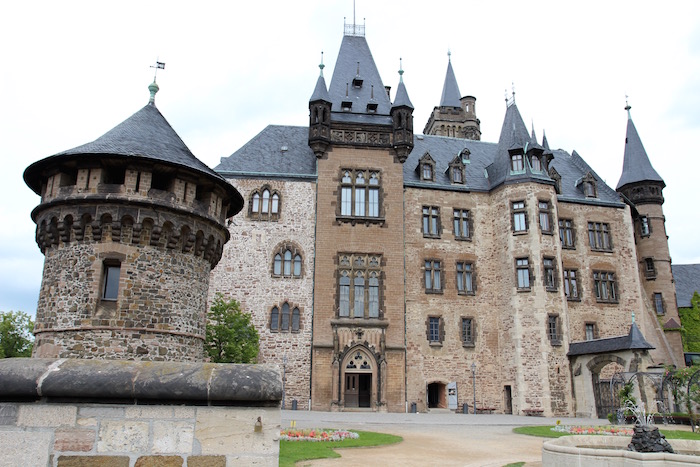 Wernigerode Castle. A Castle That Looks Like Ones in Fairy tales!
Wernigerode Castle. A Castle That Looks Like Ones in Fairy tales!
High on a hill overlooking the town of Wernigerode, also in the Harz mountain region, is the fairy tale-like Wernigerode castle. Its current design dates back to the 19th Century, when Count Otto, who held a number of positions including being German Vice-Chancellor under Otto von Bismarck (the First Chancellor of Unified Germany), had the existing baroque castle extensively reworked and designed to incorporate a variety of styles and designs based on a neo-Romantic approach. He created a surprising and magical-looking palace that looks different from every angle that I viewed it from.
I went on a guided tour through the old private apartment rooms, filled with authentic furniture, as well as the rooms like the dining room that were used for more public events. There are also apartments that were designed for and used by Emperor Wilhelm I, who was the first monarch of the unified Germany, who would come and hunt in the area.
When the family could no longer afford to manage it, it was taken over by the town. Much of the furniture is original or authentic to the period, although the family had sold the valuable book collection and some paintings as they struggled financially before giving it up. During Eastern German times the castle was retained and carefully cared for, but positioned as a Museum of Feudalism to highlight how the wealthy had prospered and lived a flamboyant and opulent life on the back of the workers.
If you do not want to go on a guided tour, there is an audio option. Either is recommended to ensure you get the most from your visit.
My five top tips for getting the most out of visiting the Harz region
- Allow a minimum of four days and ideally a week to properly see the region and places I have described above. Although the places are at most 30 minutes apart, you need this time to see everything at a decent pace. The largest airport to fly into is Hanover, which is about an hour and half drive from Goslar.
- Visit and ask the local tourism board offices for advice and tips. They are usually located in the town square and will be able to provide updates on opening hours, market days and arrange guides in your preferred language.
- Be prepared for mostly German language. The majority of tourists are currently coming from Germany, Netherlands and Denmark. While many of the tourist-facing businesses are able to understand or communicate in English, some of the museums and materials are not fully catering for English-speakers yet. Although this is evolving, it will be helpful to arrange English-speaking guides or tours in some of the destinations and attractions. Learn a few basic terms, including greetings and asking if people speak English! You could have a translation app on your smartphone.
- Come by or hire a car. You need one to efficiently get around the area, as it does not have a fully integrated public transport system. The Harz Tourist Board advised that at least 90% of visitors use a car to get around. If hiring a vehicle, I recommend having one with a satellite navigation system. Ask the company to either set it to English or give you instructions on how to do this.
- Enjoy German traditional restaurants. In most of the towns you will be able to find places serving traditional dishes like schnitzel and bratwurst. I recommend embracing the culinary treats, and if a drinker then the local beer. I found many places did have menus available in English on request.
Final Thought
The Harz region, and the treasures it has to offer visitors, is still a hidden gem and relatively under visited. The facilities and infrastructure though are well developed and of high standard. This makes it a perfect choice for travellers interested in arts, culture, history and exploring countryside but looking for somewhere beyond the obvious.
My Video Overview of the Harz Region
Disclaimer. I travelled to the Harz region of Germany as a guest of the German National Tourism Board and the Harz Mountains Tourism Board.


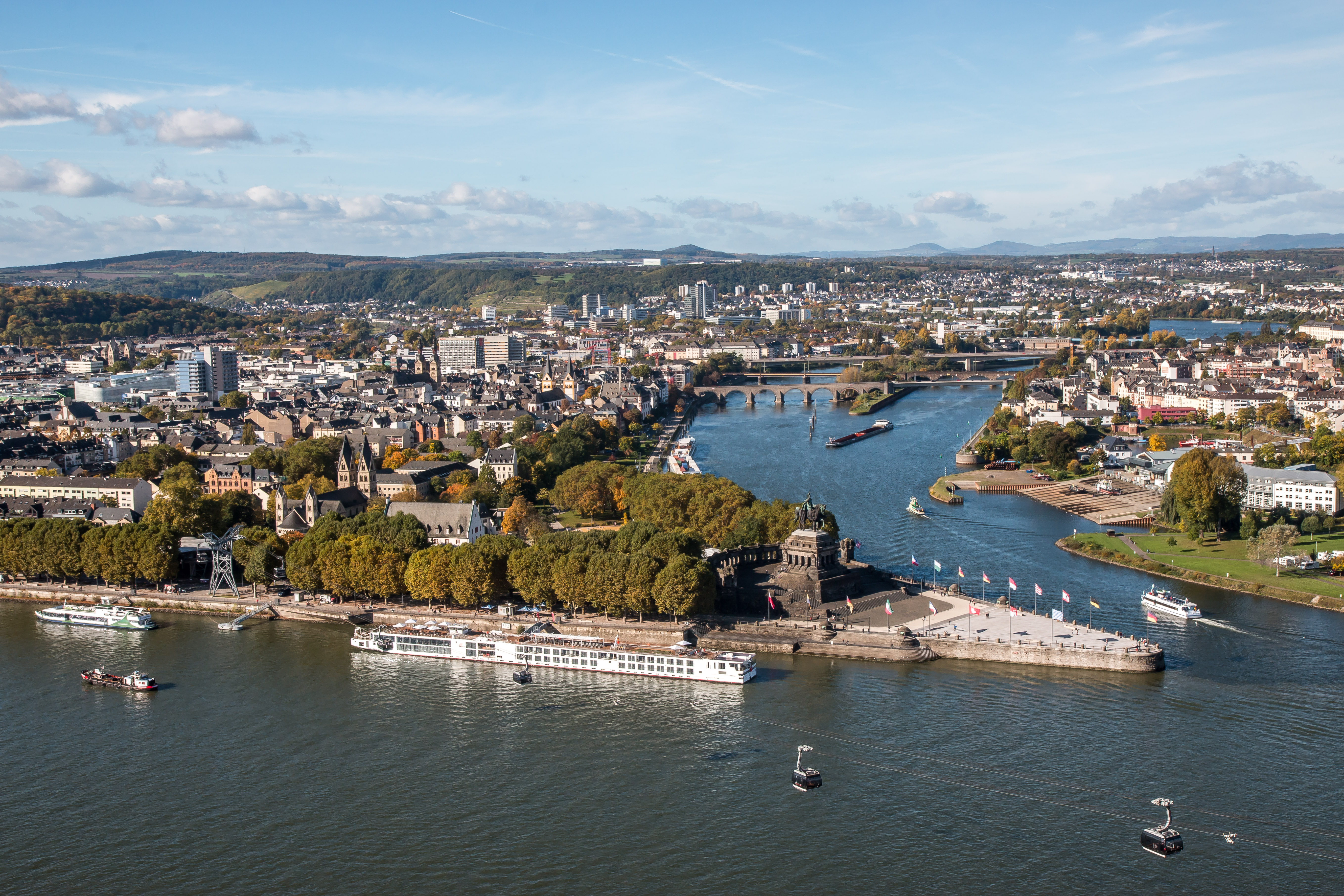
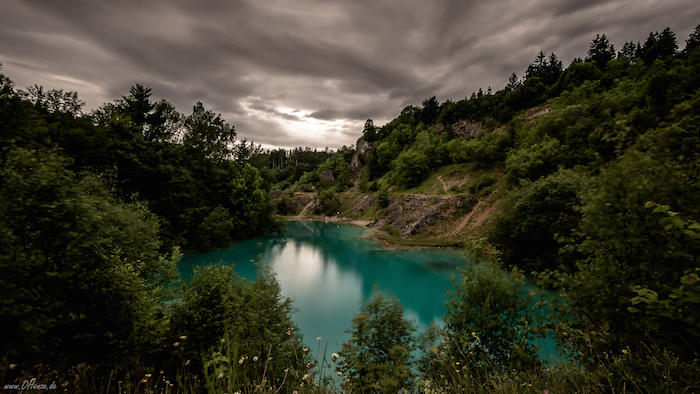










My family and I visit the region at least 3 times a year. It is simply a delightful destination and a great part of its appeal is how uncrowded it is. It has long been a popular destination for ‘older’ people but in recent years is selling itself as a place where you can enjoy outdoor activities such as kayaking and mountain biking. While the mountains may not be close to Alpine, the hills are nevertheless beautiful. Our favourite activities are skiing in winter and hill walking in the other seasons. The prices are also very agreeable (compared to Denmark where I live). I highly recommend the Rammelsberg Weinachtsmarkt in early December.
Thanks for taking the time to review my article and leaving your thoughts and added suggestions on the region. There is definitely a lot of things for people to do who want to be more active and (as you say) there seems to be more and more emphasis on giving this option to people to get outdoors and get active in the beautiful countryside. I agree, it seemed reasonable priced too!